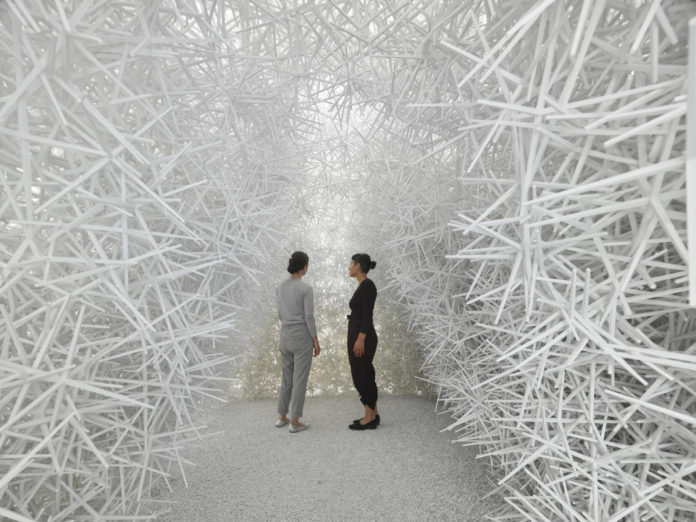Architects design structures to last for generations. They erect buildings that will become classic additions to the skyline and last for generations due to solid foundations unsusceptible to catastrophic disaster. Researchers at the Institute for Computational Design and Construction (ICD) at the University of Stuttgart have taken a different approach in their recent 2018 Aggregate Pavilion, a moveable structure composed of thousands reusable star-shaped parts.
For the last ten years, researchers at ICD have studied how the behavior of granular substances, such as sand or gravel, can be adapted into an inhabitable structure. Their pavilion is the latest result from this research, and the first fully enclosed architectural space that has been entirely constructed from elements which hold their position by loose frictional contact. This allows the piece to act as a solid material while also maintaining the properties of a shape-shifting fluid.
For construction, 70,000 recycled plastic particles were poured by a robotic system into an enclosed space of about 29 x 32 feet. Included in the pour were also dozens of inflatable balloon-like objects, which fill the structure’s negative space until they are removed. These rubber spheres are used by the designers to roughly construct the inner form of the pavilion, creating hollow areas where the surrounding decapod particles will not topple inwards. You can take a look behind the making of ICD’s granular structure in the video below, and see more projects by the institute on their website. (via Archdaily)

Photo © Roland Halbe

Photo © Roland Halbe

Photo © Roland Halbe

Photo © Roland Halbe

Photo © Roland Halbe
ICD Aggregate Pavilion 2018 from ICD on Vimeo.

























